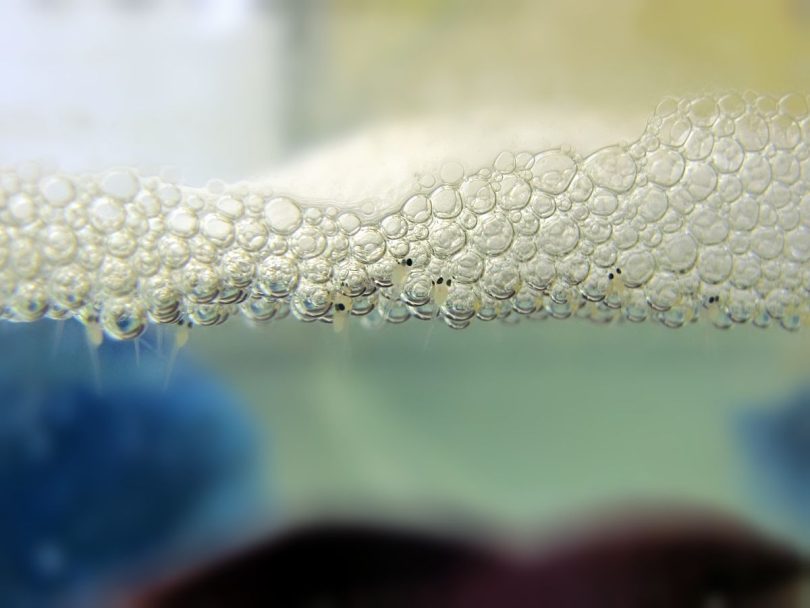Table of Contents
Aquarium enthusiasts often choose Betta fish, also known as Siamese fighting fish. They are known for their vibrant colors and unique personalities. However, breeding betta fish requires a bit of knowledge and expertise. One important aspect of betta fish breeding is understanding the development of betta fish eggs.
Successful hatching of betta fish eggs requires specific conditions since they are small and delicate. Betta fish eggs are telolecithal and lack oil droplets, unlike some other fish species.
The vegetal pole contains the most concentrated yolk, while the animal pole has more organelles and cytoplasm. Knowledge of the structure and development of betta fish eggs is vital for successful breeding and hatching.
Preparing for Breeding Betta Fish
Breeding betta fish can be a rewarding experience for fish enthusiasts. Before breeding, it is important to prepare the tank and the fish to ensure successful breeding. This section outlines the steps involved in preparing for breeding betta fish.
Tank Setup
The first step in preparing for breeding betta fish is setting up the breeding tank. The breeding tank should be at least 10 gallons in size and should be equipped with a heater, filter, and a lid. The water temperature should be maintained between 78°F and 82°F.
To create a suitable breeding environment, the breeding tank should be decorated with live or artificial plants, a spawning cave, and a breeding cone.
The spawning cave and breeding cone provide a place for the male betta to build a bubble nest, which is essential for breeding.
Conditioning the Fish
Before breeding, the male and female betta fish should be conditioned for a period of two to three weeks. Conditioning involves feeding the fish a high protein diet and gradually increasing the frequency of feedings.
During the conditioning period, the male and female betta fish should be kept in separate tanks to prevent aggression. The tanks should be placed next to each other so that the fish can see and become familiar with each other.
Feeding the Fish
To prepare for breeding betta fish, it’s crucial to feed them a high protein diet of live or frozen foods like bloodworms, brine shrimp, and daphnia. Increase feeding frequency gradually to twice a day.
It is important to avoid overfeeding the fish as this can lead to health problems and reduce the chances of successful breeding. A good rule of thumb is to feed the fish small amounts of food that they can consume within two minutes.
In conclusion, preparing for breeding betta fish involves setting up the breeding tank, conditioning the fish, and feeding them a high protein diet.
By following these steps, fish enthusiasts can increase their chances of successful breeding and enjoy the experience of raising betta fish.
Spawning Betta Fish
Betta fish are known for their vibrant colors and long flowing fins. Breeding these fish can be a rewarding experience for fish enthusiasts. In order to breed Betta fish, it is important to understand the spawning process.
Identifying the Right Time to Spawn
Betta fish are ready to breed when they reach maturity, which is typically around 6 months of age. It is important to ensure that the male and female Betta fish are healthy and well-fed before attempting to breed them.
The breeding process can be stressful for the fish, so it is important to provide them with a calm and stress-free environment.
Introducing the Male and Female Betta Fish
When introducing the male and female Betta fish, it is important to keep them separated at first. This can be done by placing them in separate tanks or by using a divider in the same tank. This will allow them to see each other and get used to each other’s presence.
After a few days, the male Betta fish can be released into the female’s tank. It is important to watch them closely during this time, as the male may become aggressive towards the female. If this happens, it may be necessary to separate them again.
Egg Laying Process
When the Betta fish are ready to breed, the male will begin to build a bubble nest at the surface of the water. This nest is made up of bubbles and plant matter and provides a safe place for the eggs to be laid.
The female Betta fish will lay her eggs in the bubble nest, and the male will fertilize them. Once the eggs are laid, the male will protect the nest and ensure the eggs’ safety.
It is important to remove the female Betta fish from the tank after the eggs have been laid, as the male may become aggressive towards her. After 24-48 hours, the eggs will hatch, and the fry will start swimming freely in 3-4 days.
Overall, breeding Betta fish can be a rewarding experience for fish enthusiasts. By understanding the spawning process and providing a calm and stress-free environment, it is possible to successfully breed these beautiful fish.
Caring for Betta Fish Eggs
When it comes to caring for Betta fish eggs, there are a few important things to keep in mind. This section will cover the egg incubation period, maintaining water quality, and feeding the fry.
Egg Incubation Period
Betta fish eggs typically take between 24 and 36 hours to hatch, depending on the water temperature. During this time, it’s important to keep the eggs in a safe and stable environment.
It’s advisable to use a separate breeding tank or container to isolate the eggs from other fish. The ideal water temperature is 78-80°F, and the pH level should be around 7.0.
Maintaining Water Quality
To ensure the health of the eggs and fry, it’s vital to maintain water quality during the incubation period and after hatching. Keep the water clean and free of harmful substances that could harm them.
Regular water changes should be done to keep the water fresh and clean. A good filtration system is also recommended to keep the water quality high.
Feeding the Fry
After the eggs hatch, the fry will need to be fed small amounts of food several times a day. Newly hatched brine shrimp or commercial fry food can be used to feed the fry.
It’s important not to overfeed the fry, as this can lead to poor water quality and health issues. A good rule of thumb is to feed the fry small amounts of food several times a day.
In summary, caring for Betta fish eggs requires a safe and stable environment during the incubation period, maintaining high water quality, and feeding the fry small amounts of food several times a day. By following these guidelines, you can increase the chances of successfully raising healthy Betta fish fry.
Hatching Betta Fish Eggs
Betta fish are known for their beautiful colors and flowing fins, but they are also fascinating creatures to breed.
Hatching betta fish eggs can be a rewarding experience for fish enthusiasts. In this section, we will discuss the hatching process, caring for the fry, and separating the fry.
Hatching Process
To breed betta fish successfully, it’s crucial to replicate their natural habitat. The male creates a bubble nest where the female lays her eggs, which he fertilizes and guards. The eggs hatch in 24-36 hours at 80°F (27°C). Use a heater to maintain the temperature.
Caring for the Fry
Once the eggs hatch, the fry will stay in the bubble nest for a few days. Throughout this period, the male will keep protecting the nest and looking after the fry. The fry will feed on their yolk sacs for the first few days.
After the yolk sacs are absorbed, you can start feeding the fry with infusoria or liquid fry food. As the fry grow, you can gradually introduce brine shrimp or microworms to their diet.
It’s important to keep the water clean during this time. You can do partial water changes every few days to maintain good water quality.
Separating the Fry
After a week or two, the fry will start to swim away from the bubble nest. At this point, you can separate them from the male and move them to a separate tank.
You can use a small net to gently scoop up the fry and transfer them to their new tank. Make sure the tank is cycled and has a sponge filter to prevent the fry from getting sucked in.
In conclusion, hatching betta fish eggs can be a fun and rewarding experience for fish enthusiasts. By following the proper hatching process, caring for the fry, and separating them at the right time, you can raise healthy and vibrant betta fish.
Conclusion
In conclusion, betta fish eggs are delicate and require specific conditions for successful hatching. It is essential to maintain the water temperature between 78-80°F and keep the eggs in a dark and quiet environment.
Betta fish eggs take around 24-48 hours to hatch, and the fry should be fed small amounts of food several times a day.
It is worth noting that betta fish eggs are small enough to be cryopreserved, making them a potential option for preservation. However, further research is needed to determine the feasibility and effectiveness of this method.
Additionally, studies have shown that external factors such as environmental exposure to fluoxetine can potentially alter specific behaviors, such as filial cannibalism, in male fighting fish. Therefore, it is crucial to provide a safe and stress-free environment for both the eggs and the adult fish.
Overall, successful hatching of betta fish eggs requires careful attention to detail and proper maintenance of the eggs’ environment.
With the right conditions and care, betta fish eggs can hatch into healthy and vibrant fry, providing a rewarding experience for fish breeders and enthusiasts alike.







